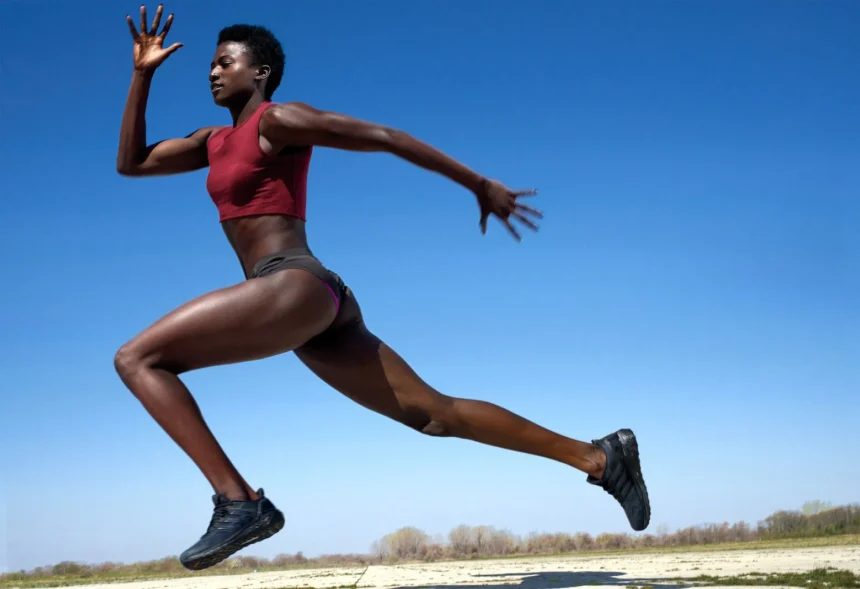Humans have always pushed the boundaries of speed. Whether it’s on the Olympic track or during a school race, the question “how fast can a human run?” sparks curiosity in athletes and science enthusiasts alike. In this article, we’ll break down the average, peak, and potential maximum running speeds for humans and uncover the biological and biomechanical factors that play a role.
Profile Biographie Table
| Aspect | Detail |
| Topic | How Fast Can a Human Run |
| Focus Area | Human Running Speed |
| World Record Sprint | Usain Bolt – 27.78 mph (44.72 km/h) |
| Average Human Speed | 8–12 mph (13–19 km/h) |
| Top Female Sprinter | Florence Griffith-Joyner – 21.34 mph |
| Field of Study | Sports Science & Biomechanics |
| Factors Influencing | Genetics, Training, Technique, Physiology |
| Limit Theory | ~28-40 mph (with biomechanical assistance) |
Human Top Sprinting Speed
The fastest a human has ever been recorded running is 27.78 mph (44.72 km/h), achieved by Usain Bolt during his 100-meter sprint at the 2009 World Championships. This remains the gold standard in human speed.
Sprinters reach such speeds only for very short distances, and maintaining this pace for more than a few seconds is physiologically impossible due to the high energy demand and muscular fatigue.
Average Running Speed for Humans
While elite athletes sprint at over 20 mph, the average human running speed is significantly lower. A fit, healthy adult can typically run at 8 to 12 mph (13 to 19 km/h).
Jogging speeds are lower, around 4 to 6 mph, and professional long-distance runners can maintain speeds between 12 and 15 mph over extended periods.
How Do Humans Run So Fast?
Running involves a complex interplay of:
- Muscle fiber types (fast-twitch for speed)
- Oxygen capacity (VO₂ max)
- Stride length and frequency
- Reaction time and force application
Elite sprinters train extensively to optimize every one of these elements. Technology like motion capture and force sensors helps athletes fine-tune their mechanics.
Male vs Female Speed Differences
Generally, men run faster than women due to physiological differences like:
- Greater muscle mass
- Higher testosterone levels
- Lower body fat percentage
That said, female sprint records are still extraordinary. Florence Griffith-Joyner clocked 10.49 seconds in the 100m, equivalent to about 21.34 mph (34.33 km/h).
Can Humans Run Faster Than 30 mph?
According to biomechanical models, humans may be capable of running even faster—possibly up to 35–40 mph. However, this would likely require:
- Optimized muscle-tendon efficiency
- Perfect biomechanics
- Possibly some form of external support (like assisted treadmills)
Speed vs Endurance Running
Sprint speed isn’t the same as endurance running:
- Sprinters: Fast-twitch muscle dominance, explosive strength, anaerobic system reliance.
- Endurance runners: Slow-twitch muscle dominance, aerobic efficiency, long-distance capacity.
Marathon runners can’t sprint at top speeds, and vice versa.
Age and Speed: When Are We Fastest?
Most humans reach peak running speed between ages 18 and 27. After that, speed slowly declines due to muscle loss, slower recovery, and reduced joint flexibility.
However, many elite sprinters and long-distance runners maintain elite speed into their 30s with the right training and recovery.
Can Training Improve Speed Significantly?
Yes—training, especially interval training, resistance work, and plyometrics, can improve speed. Key techniques include:
- Sprint drills
- Strength training
- Flexibility and mobility exercises
- Biomechanical analysis and correction
While genetics set limits, training can push those limits much further.
Technological Advances in Speed Training
From carbon-plated shoes to AI-driven coaching, technology is helping humans run faster than ever. Wearables can track stride efficiency, heart rate, and recovery to optimize training plans for speed improvements.
Speed in Different Sports
Speed isn’t just for track events. Top-level running speeds also occur in:
- American football: Athletes can hit 22–23 mph in-game (Tyreek Hill).
- Soccer: Speeds up to 22 mph in sprints (Kylian Mbappé).
- Rugby: Jonah Lomu clocked speeds around 22 mph in his prime.
Can Animals Run Faster Than Humans?
Yes—many animals run significantly faster than humans. For comparison:
- Cheetah: 60–70 mph (world’s fastest land animal)
- Horse: ~55 mph in a sprint
- Greyhound: ~45 mph
Still, humans excel in long-distance endurance, outpacing most animals over long runs due to our sweat glands and energy regulation.
The Future of Human Speed
With advances in training, nutrition, biomechanics, and even potential gene editing, human sprinting speeds may continue to increase slightly. But biological limits—like tendon elasticity and oxygen delivery—may prevent significant jumps unless external assistance is involved.
Conclusion
So, how fast can a human run? Currently, the maximum recorded speed is 27.78 mph, but science suggests the upper human limit might be 35–40 mph. The average person, though, runs much slower—between 8 to 12 mph. With ongoing scientific research, better training methods, and perhaps future innovations, we might see those records inch even higher.
Read more: JalbiteSnacks Lunch Time – A Fresh Revolution in Midday Meals
FAQs
The fastest recorded human speed is 27.78 mph (44.72 km/h) by Usain Bolt during a 100m race in 2009.
Most people can run between 8 to 12 mph. This depends on fitness level, age, and training.
Theoretically, yes. Biomechanical studies suggest humans could possibly reach 35–40 mph under optimal conditions, but no human has done it unaided yet.
Generally, yes, due to muscle mass and testosterone differences, but top female sprinters are still incredibly fast and elite performers.
Speed is partly genetic, but training can dramatically improve it. Strength work, technique drills, and sprint-specific conditioning are effective methods.
Animals like cheetahs and greyhounds have body structures and muscles optimized for sprinting. However, humans are better at long-distance running thanks to superior endurance.







